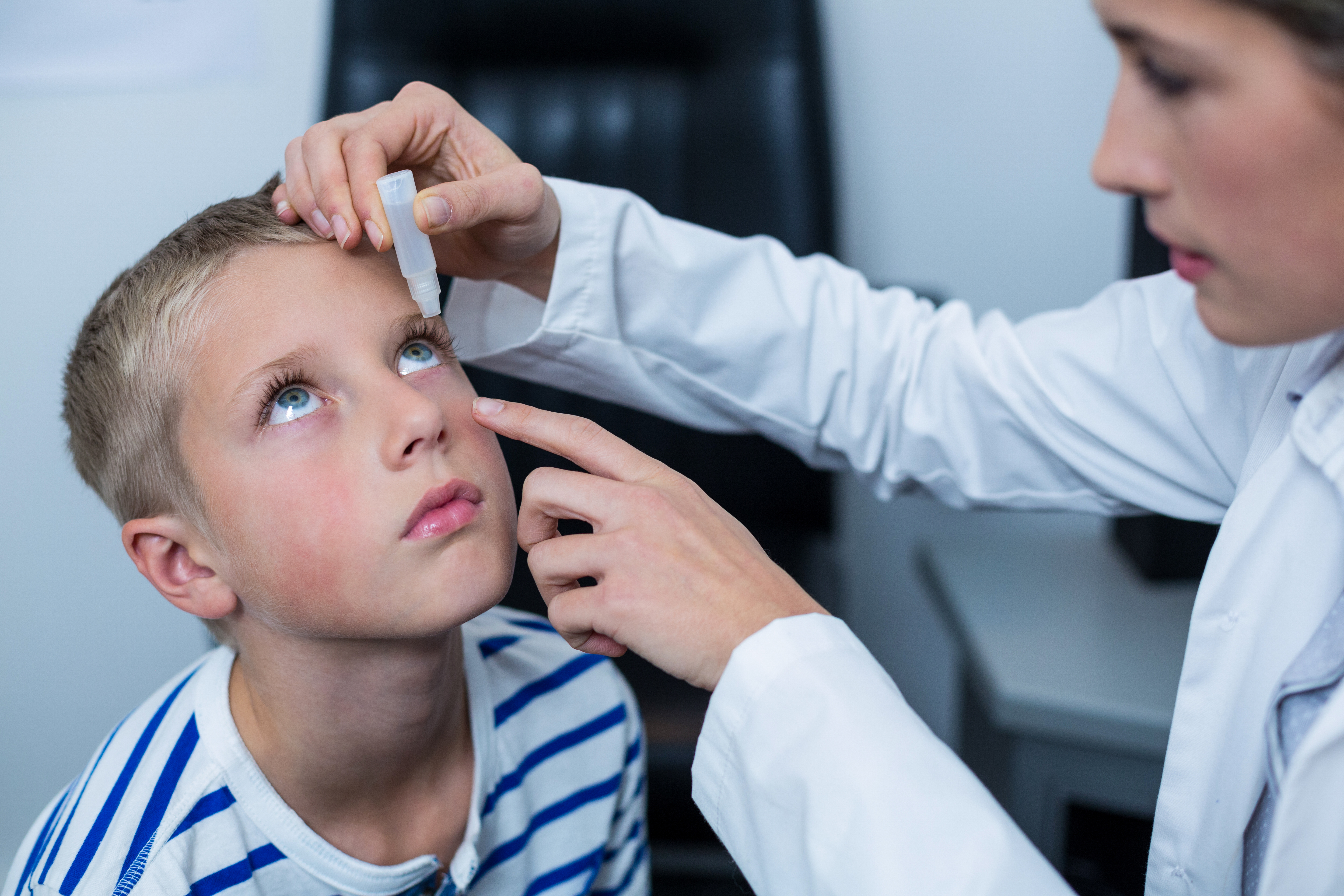 |
| Study shows 0.005% and 0.01% atropine doses effectively reduced myopia progression in children aged six to 11 with mild to moderate disease. Photo: Getty Images. Click image to enlarge. |
Atropine is a common therapeutic to slow the progression of myopia, but higher doses have been associated with adverse effects such as near-blurred vision and excessive pupil dilation. In addition, it’s unclear if the minimum effective dose is effective in pediatric patients. In this study, researchers assessed the dose-response effects of low-dose atropine on myopia progression and safety in pediatric patients with mild to moderate myopia.
This phase II randomized, double-masked, placebo-controlled study compared the efficacy and safety of 0.0025%, 0.005% and 0.01% atropine with placebo in 99 children aged six to 11 years with mild to moderate myopia. Subjects received one drop in each eye at bedtime and were evaluated over one year. The primary efficacy endpoint was change in spherical equivalent, while secondary endpoints included changes in axial length and near logMAR visual acuity and adverse effects.
There were no significant changes in near visual acuity in any of the treatment groups. The most common ocular adverse events were pruritus and blurred vision, each occurring in four atropine-treated children.
Efficacy was better in older children and those with higher baseline myopia. Treatment with these doses of atropine had little effect on distance or near logMAR BCVA but was associated with a small increase in pupil size (0.3mm) and change in intraocular pressure (<1mm Hg). All doses of atropine were safe and well-tolerated, with the most common adverse effects being eye pruritus and blurred vision in four subjects each, with the highest concentration of atropine studied, 0.01%, being associated with eye pruritus and eye glare in two subjects each.
Atropine doses of 0.01% to 0.5% have been previously found to reduce myopia progression. Higher doses, however, have also been associated with an increase in adverse effects, with increased loss of accommodation and pupil dilation leading to near-blurred vision and glare, the authors noted.
“Although only 6% of children treated with 0.01% atropine in the ATOM2 study thought that they required tinted glasses with near-vision aid, these percentages increased to 61% and 70% in children treated with 0.1% and 0.5% atropine, respectively,” they explained. “Moreover, atropine-related adverse effects were uncommon at 0.01%, with low-dose atropine being safe and well-tolerated in children. Similar results were observed in the present study, which evaluated the effects of a lower range of atropine doses, from 0.0025% to 0.01%, finding a low incidence of ocular adverse effects.”
The effect of baseline myopia severity on the efficacy of atropine isn’t clear and may be confounded by the link between older age and higher baseline myopia, the authors noted. This study found trends toward greater efficacy both in children with more severe myopia at baseline and in older children.
“In contrast, the two-year ATOM-J study in Japan found that efficacy was unrelated to baseline myopia severity,” the authors explained. “A retrospective study in Chinese children found that atropine 0.01% had greater efficacy in slowing myopia progression in children with more severe myopia, likely because the subjects in that study were older. In the LAMP study, younger age was associated with poorer response to atropine. A later analysis of the LAMP study found that younger children required higher doses of atropine to achieve a similar reduction in myopic progression as older children receiving lower doses. The current study’s results are in accordance with previous findings that older children have a better response to atropine.
Chia A, Ngo C, Choudry N, et al. Atropine ophthalmic solution to reduce myopia progression in pediatric subjects: the randomized, double-blind multicenter Phase II Apple Study. Asia Pac J Ophthalmol. February 24, 2023. [Epub ahead of print]. |

